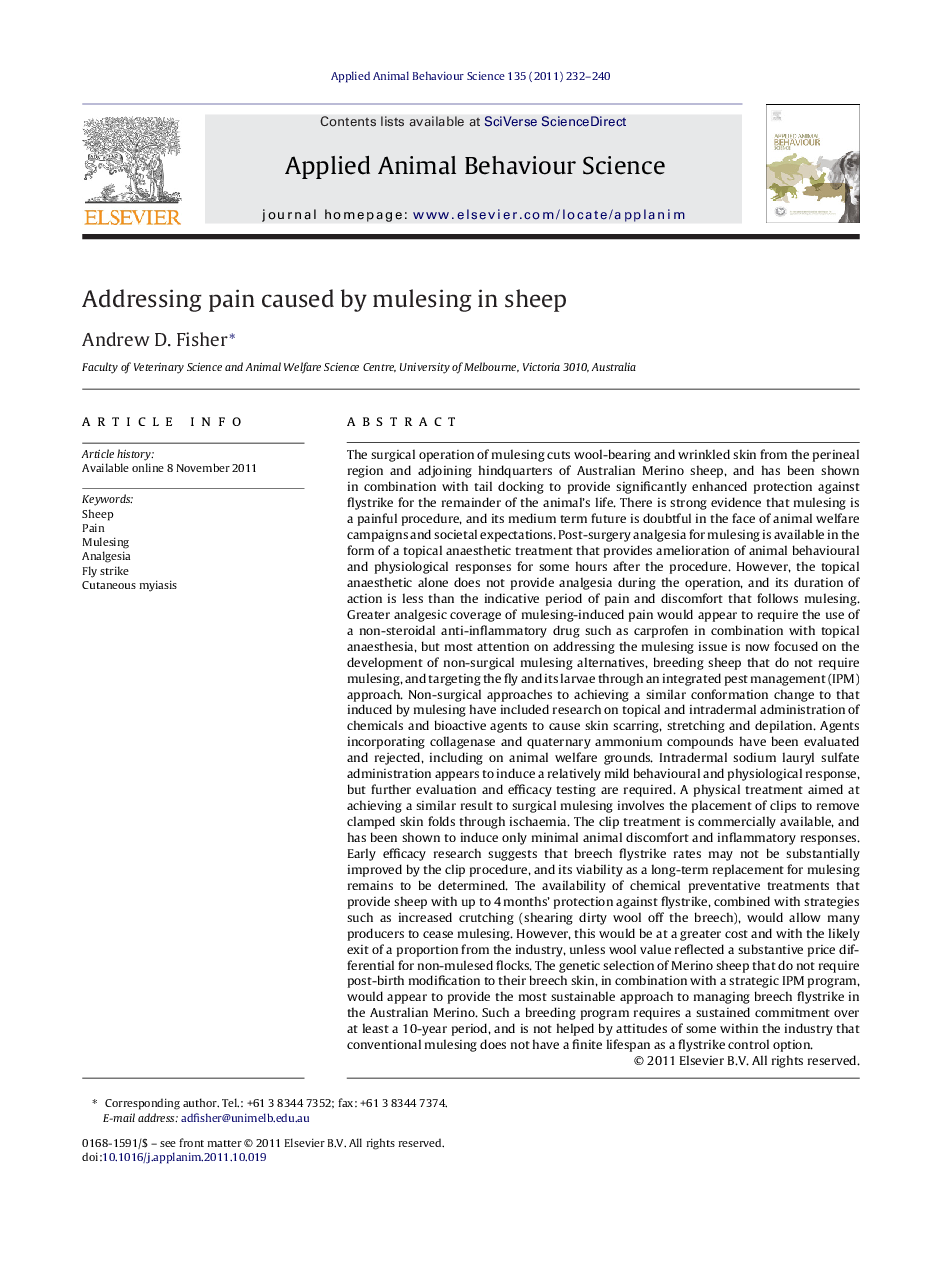| کد مقاله | کد نشریه | سال انتشار | مقاله انگلیسی | نسخه تمام متن |
|---|---|---|---|---|
| 4523027 | 1323240 | 2011 | 9 صفحه PDF | دانلود رایگان |

The surgical operation of mulesing cuts wool-bearing and wrinkled skin from the perineal region and adjoining hindquarters of Australian Merino sheep, and has been shown in combination with tail docking to provide significantly enhanced protection against flystrike for the remainder of the animal's life. There is strong evidence that mulesing is a painful procedure, and its medium term future is doubtful in the face of animal welfare campaigns and societal expectations. Post-surgery analgesia for mulesing is available in the form of a topical anaesthetic treatment that provides amelioration of animal behavioural and physiological responses for some hours after the procedure. However, the topical anaesthetic alone does not provide analgesia during the operation, and its duration of action is less than the indicative period of pain and discomfort that follows mulesing. Greater analgesic coverage of mulesing-induced pain would appear to require the use of a non-steroidal anti-inflammatory drug such as carprofen in combination with topical anaesthesia, but most attention on addressing the mulesing issue is now focused on the development of non-surgical mulesing alternatives, breeding sheep that do not require mulesing, and targeting the fly and its larvae through an integrated pest management (IPM) approach. Non-surgical approaches to achieving a similar conformation change to that induced by mulesing have included research on topical and intradermal administration of chemicals and bioactive agents to cause skin scarring, stretching and depilation. Agents incorporating collagenase and quaternary ammonium compounds have been evaluated and rejected, including on animal welfare grounds. Intradermal sodium lauryl sulfate administration appears to induce a relatively mild behavioural and physiological response, but further evaluation and efficacy testing are required. A physical treatment aimed at achieving a similar result to surgical mulesing involves the placement of clips to remove clamped skin folds through ischaemia. The clip treatment is commercially available, and has been shown to induce only minimal animal discomfort and inflammatory responses. Early efficacy research suggests that breech flystrike rates may not be substantially improved by the clip procedure, and its viability as a long-term replacement for mulesing remains to be determined. The availability of chemical preventative treatments that provide sheep with up to 4 months’ protection against flystrike, combined with strategies such as increased crutching (shearing dirty wool off the breech), would allow many producers to cease mulesing. However, this would be at a greater cost and with the likely exit of a proportion from the industry, unless wool value reflected a substantive price differential for non-mulesed flocks. The genetic selection of Merino sheep that do not require post-birth modification to their breech skin, in combination with a strategic IPM program, would appear to provide the most sustainable approach to managing breech flystrike in the Australian Merino. Such a breeding program requires a sustained commitment over at least a 10-year period, and is not helped by attitudes of some within the industry that conventional mulesing does not have a finite lifespan as a flystrike control option.
Journal: Applied Animal Behaviour Science - Volume 135, Issue 3, 15 December 2011, Pages 232–240